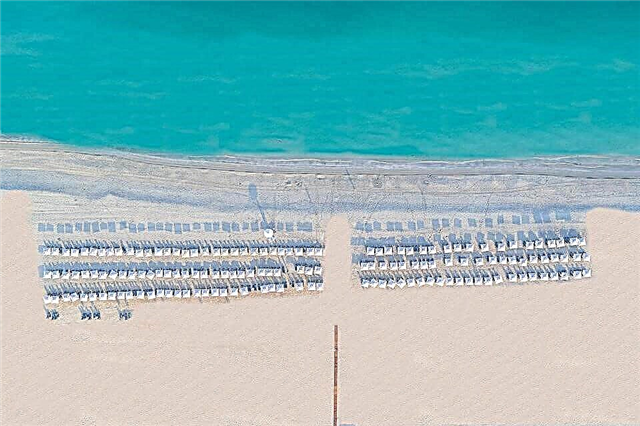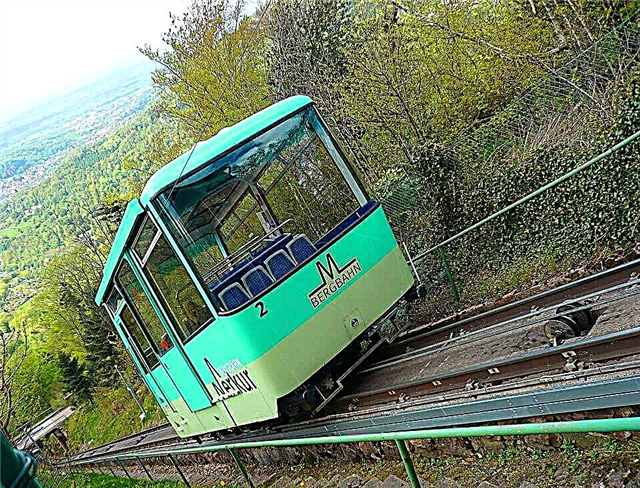The city seems to have been specially created to surprise, to challenge stereotypes about a quiet, boring German provincial city with a population of 60 thousand inhabitants. Its name is associated with hot springs, spa treatments, museums, festivals, mysteries of history, outstanding artists, musicians, and crowned heads. The sights of Baden-Baden are a mix of the heritage of different cultures. In the monuments of the German town located on the banks of the Os River, the influence of neighboring France is noticeable. The old part of Baden - this name was official until 1931 - can be compared to a fantastic dimension where Ancient Rome, the Austro-Hungarian Empire, pre-revolutionary Russia, and Renaissance Italy met. Realities are changing, and the city remains the center of attraction for the elite, connoisseurs of respectable rest, adventure seekers. Its houses, monuments, ruins keep secrets about the life of the rich and famous. An elite resort is like a precious Faberge box filled with surprises.
Casino

The gambling establishment is more reminiscent of a museum, and not a "nest of vice" in the version that is usually portrayed in books and films. The Germans consider the Kurhaus casino to be the oldest in Europe. The institution was opened in 1827. The title of the most beautiful in the world was "assigned" to him by the great film actress, fan of gambling Marlene Dietrich. Initially, the building was intended for resort recreation of aristocrats, as the name reminds of (translated from German, the word means “Spa House”).
Before World War II, the casino played the role of a cultural center, where the intellectual, creative, political and financial European elite gathered. Today "Kurhaus" is open for visits to commoners, tourists, fans of gambling on condition: they are decently dressed, have reached the age of majority (21 years of age). The casino has retained the functions of a cultural center. The institution regularly hosts historical balls, meetings of prestigious creative and sports clubs, concerts of opera stars.
The interior of the building is divided into 2 parts. One of them is reserved for halls for card games, roulette, "one-armed bandits", and VIP-visitors' offices. The other part is occupied by restaurants, concert halls, ballrooms, premises with unique historical exhibits. The casino is open all year round except on major Catholic holidays. The institution participates in the German state programs for the prevention of gambling addiction.
Faberge Museum
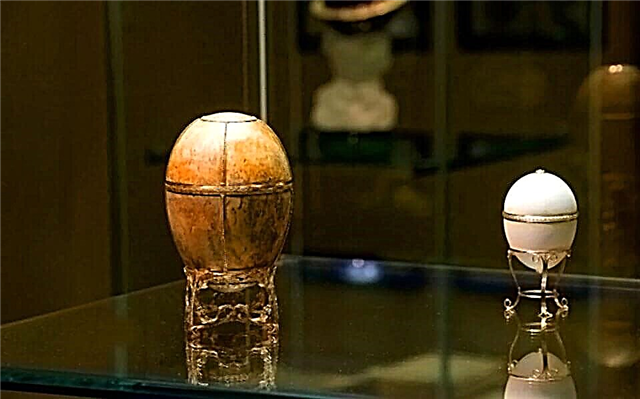
It is called the world's first and only museum of the firm of an outstanding Russian jeweler. The second statement is controversial, because in St. Petersburg there is an institution of the same name, where another collection of Carl Faberge is kept. In the halls of the Baden Museum, there are over 700 exhibits made of silver, gold, platinum, precious and semi-precious stones.
Jewelry for men and women, Easter eggs, cigarette cases, dishes, lamps, figurines, miniatures - the funds contain over 3000 works of art. A significant part of the items belonged to the Romanov dynasty. After the revolution, Carl Faberge, whose company was the official supplier of the imperial court, managed to save his life by illegally leaving Russia. The jeweler has lost most of his property. His businesses, custom-made jewelry, stocks of precious metals, cameos were nationalized by the new state.
The history of the founding of the museum in Baden-Baden by the Moscow collector Alexander Ivanov seems symbolic. He handed over the collected antiques to the German city in order to protect the masterpieces from the encroachments of Russian bandits. The unofficial value of the jewelry was $ 2 billion. The museum was opened in 2009, its collection continues to be replenished with masterpieces of antique jewelers who lived before the colonization of America by the Indians, modern masters.
Collegiate church

Theologians and historians date the construction of the temple to the 13th century. There is information that the family tomb of the margraves, the rulers of the Baden district, became part of the church. The latter was erected 3 centuries earlier than the temple, which is dedicated to the foremost Christian apostles Peter and Paul. Today the church belongs to the Protestant community. The temple is open to the public, services and traditional Christmas and Easter concerts of sacred organ music are held there.
In the architecture, the interior decoration of the building, the dominant elements of the Gothic style, stylistic solutions in the spirit of the Baroque, Romanov style were intricately intertwined. Pilgrims and tourists from all over the world come to the church to see the stained-glass windows, the stone sculpture of the crucified Christ more than 6 meters high, the figure of the Virgin Mary, the built-on bell tower with a three-tiered roof.
The surviving ancestral tombs in the choir of the church remind of the legend, how one of the margraves the dreamed apostles promised a last refuge in their home. The ancient temple bells have not survived. The oldest of the existing "voices of God" was cast in the 13th century, the rest - 200 years later. The foundation of the building is constantly damaged by underground waters, but the townspeople are doing everything possible to preserve the temple.
Drinking pavilion

An amazing construction with a length of 90 meters is located next to the "Kurhaus" casino. Externally, the pavilion resembles the facade of a royal palace with 16 columns. The pavilion was built in the first half of the 19th century and has hardly changed, thanks to the outstanding German restorers. The building is decorated with unique frescoes, the scenes of which are reminiscent of the legends of Baden-Baden.
The bust of the Kaiser, Emperor Wilhelm I of Germany, installed near the pavilion, is a tribute to the memory of an outstanding personality in European history. His reign is often referred to as the "Golden Age of Baden". An alley named after the Kaiser leads to the pavilion. The main purpose of visiting this popular place: the unique healing water from 2 Baden springs.
Its properties are still not fully understood. The water has a slightly salty taste. Scientifically proven: the miraculous liquid strengthens the immune system, treats diseases of the nervous, gastrointestinal, musculoskeletal systems. The people of Baden joke that mineral water replaces food, because the first contains all the microelements that are important for the full functioning of the body.
Caracalla Terme

Even the most indifferent to baths, saunas, swimming pools, tourists try to visit an entertaining medical complex with a sonorous name. Caracalla Terme covers an area of over 4000 square meters. The name of the center evokes associations with Ancient Rome. The architecture of the German structures, buildings, pools of the complex visually resembles the ancient one, adjusted for the possibilities of modern technologies.
The complex in the very center of the German city began to function in the 80s of the last century. Its layout still inspires admiration of specialists: it takes into account the requests of the spa visitors as much as possible. Open, closed pools of various depths and shapes, spacious rooms for water hygiene, inhalation, hydromassage procedures, solariums, saunas - only a small part of the list of facilities located in an area with several hot springs.
The center works all year round. Restrictions for his visit: medical contraindications, age under 3 years. For older children, a special playground is equipped, divided into open and closed parts. Young guests of the complex are supervised while their parents relax and gain strength.
Transfiguration Church

The temple was built according to the canons of the traditional northern Russian style at the end of the 19th century. Many tourists and pilgrims associate the one-domed Transfiguration Church with pre-revolutionary Russia. Donations to the temple were made by representatives of the Romanov, Trubetskoy, Stolypin, and Gagarin dynasties. Its construction took a year.
The shape of a cross was chosen for the building, marble was used as the main finishing material. The architectural solution, where 6 columns hold the vault, made it possible to distribute the load on the foundation, to reduce its destruction from the movement of groundwater. The temple became the spiritual heart of the Russian community in Baden. The walls of the building remember Nicholas II and his wife, who visited the resort town 20 years before their death.
During the world wars, precious temple utensils and some of the icons disappeared irrevocably. Today the onion dome is decorated with a different gilding - the previous one was removed and melted down. The stained-glass windows have miraculously survived. The mosaic icon of the Transfiguration of the Lord, the stone iconostasis remained unchanged. The building and the property of the Orthodox community have been subject to litigation over the course of 20 years. As a result, the temple was transferred to the ownership of the Russian Orthodox Church Abroad.
Frieder Burda Museum

The opening of the art museum was a real sensation. The huge white building impresses with its simple form, functionality, and practical layout. Nearby is another Baden-Baden museum - "Kunsthalle", where a glass bridge leads. 2 main and 2 additional exhibition halls, whose area exceeds 1000 square meters, are always filled with visitors.
The collection of Frieder Burda, a philanthropist and founder of a famous publishing house, has been and remains one of the finest collections of works by German expressionist painters. It became the basis of the funds of the museum of the same name. Fans of avant-garde art often compare the white building with a Picasso painting. There is some truth in this: the work of the Spanish artist inspired Frieder Burda to experiment. He spared no expense to acquire paintings by Pablo Picasso, whose philosophy is close to Richard Meiner, the architect of the building.
The exhibition halls house unique paintings, installations and sculptures. The experts call the paintings by Pablo Picasso the true pearls of the collection. The museum funds are replenished with new masterpieces, and exhibitions often lack space. In such cases, some of the exhibits are hosted by the Kunsthalle.
Funicular Merkurbergbahn

It's great when there is an opportunity to look at the famous resort city from a bird's eye view. Mount Merkur is beautiful at any time of the year. She owns the laurels of the highest point of Baden-Baden. The age of the mountain is estimated at hundreds of millions of years. The cable car to its top has been operating for over a century. What awaits travelers who reached the highest point of the area in 5 minutes? Restaurant and great views.
The funicular car can accommodate 30 passengers. It provides standing, sitting places. The break between "flights" is no more than 15 minutes. It is possible to climb to the top on foot along special routes. Practical Badenians have provided a high-speed elevator for those who are not satisfied with both modes of transportation.
Park Gönneranlage

The beauty of roses surprises, delights, inspires to create masterpieces of landscape design. A striking example of this is the Genneranlage Park, whose history began in 1909. It took 3 years to open it, and the work did not stop there. Since the 50s, roses have become the main ones in the park area, which occupied 1.6 hectares. The park is named after its founder - the mayor of Baden, who did everything possible to bring a new landmark to his beloved city.
Today, over 10,000 roses grow in Genneranlag. From May to October, the air is filled with the scent of flowers. The number of cultivated varieties of roses is about 400, but this is not the limit. Every year, breeders hold professional competitions in the park, and samples of the best plants remain in the Genneranlag. The park was conceived as a place of respectable recreation. Sculptures, benches, wide avenues, a sea of flowers - this is how this amazing place looks from spring to autumn. On the territory there is a tennis court, mini golf course.
Hohenbaden old castle

Buttert Rocks are covered with forests, which makes them even more solid, majestic. At the top, Hohenbaden Castle is located as if descended from illustrations of historical novels about beautiful ladies and noble knights. It was erected about 900 years ago at an altitude of 4100 meters, for 400 years it served as the residence of the Baden margraves. Part of the castle is in ruins, but the towers and walls are perfectly preserved. Fires broke out in the building several times, the latter destroyed all valuable property.
The castle seemed to be a real architectural sensation in the Middle Ages. It's not just a unique layout, 100 rooms, increased defenses. During the arrangement, areas for close combat, traps, secret passages, halls for magnificent balls were traditionally provided. However, the presence of a sewage system made him an exception among such structures, where there were no minimal amenities.
Today the castle is open to tourists. It attracts fans of historical reenactments and fans of wind chimes. The aeolian harp in the knight's hall of Noenbaden is not a monument of antiquity. It was installed by the famous musician Rüdiger Oppermann. The wind and vibrations of the air create a stunning sound effect that enhances the mystical atmosphere of the castle, where, as the townspeople assure, there are ghosts of knights.
New castle

The site of the construction of the defensive structure was the Florentine Mountain. The construction of the castle dates back to the XIV century. It was the residence of the rulers of Baden, served as a repository of a unique local archive, a museum. The ceremonial halls in the neo-Renaissance style, basements, part of the guest rooms, restored 200 years ago, have been perfectly preserved. The fate of the building, whose splendor amazes residents, guests of the city, has developed bizarrely. It can be summed up in two words: endless renovation.
The owners of the castle rebuilt, changed the interior, improved defenses. The structure escaped destruction and fires. Sadly, architectural innovations have destroyed much of the unique medieval heritage. The restoration and repair work required huge sums. The local authorities did not have enough funds to maintain a unique architectural monument. Attempts by its next owners to retain ownership of luxury real estate turned out to be a failure.
The mystically minded Germans sometimes tell tourists about the curse of the new castle. Words can be regarded as a fairy tale, but facts are stubborn things. The building was bought by a Kuwaiti company and after 13 years it was close to ruin. Investors' plans seemed quite feasible: to equip an elite five-star hotel. The official opening of the latter was postponed several times.
Friedrichsbad Roman-Irish Baths

The thermal complex reminds of the luxurious palaces of the French aristocrats, the palaces of the Roman nobility. "Caracalla Terme" - within walking distance from the baths "Friedrichsbad". This neighborhood does not diminish the popularity of the second establishment, whose main customers are residents of Germany. Building age: 150 years. It is recognized as a unique monument of antiquity, it was not damaged during the wars. The baths are closed for tourists. What to do when there is a desire to see luxurious mosaics, wall decorations of a special kind of marble, charming interiors in the high Renaissance style?
Visit a unique place and take treatments. It has its own pool system, massage and beauty rooms, and special drinking columns with medicinal thermal water are installed.The Roman-Irish Baths are open daily until 20:00. Children under the age of 14 are not allowed to enter them. The Germans joke: it will take a lifetime to test all the spa services offered here.
Hall of Music Festivals

The building can simultaneously gather 2,500 people to enjoy musical masterpieces. It has a cozy children's theater and a chic restaurant. Since its opening in 1998, the hall has been recognized as the largest in Germany and is inferior to similar institutions only in one respect: the "Festspielhaus" does not have the opportunity to maintain a theater troupe or orchestra. This does not prevent the hall of music festivals from being the center of attraction for the German and European creative elite, intellectuals, fans of jazz, and classical music.
The unique acoustics of the building delight the professionals. It is hard to believe that the building of the Baden railway station became the basis of the unique object. "Festspielhaus" successfully operates without government subsidies, annually holds 4 large-scale music festivals, is a favorite venue for performances of world stars. Private donations, income from ticket sales are the 2 main sources of existence for a unique object. The townspeople were able to prove: art can develop successfully without the help of the state.
Ruins of Roman Baths
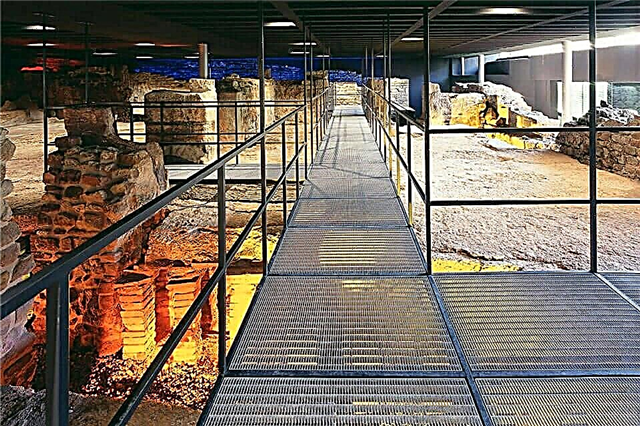
Remnants of ancient buildings are found in various parts of the city. Historical monuments attract the attention of tourists and treasure hunters. The latter managed to inflict multimillion-dollar damage to Baden in the last century, because the antique statues found by the "black diggers" and the decorative elements disappeared irrevocably. The ruins of Roman baths were discovered by accident in the 19th century. The find confirmed the well-known fact: the territory of Germany was conquered by the Romans.
The citizens of the ancient great empire could not imagine life without water and hygiene procedures. The same can be said about the soldiers, whose rights were limited and at the same time opened free access to the baths. It is noteworthy: the horses of legionnaires had such a privilege; special pools were equipped for animals next to the barracks.
Baths performed the tasks of cultural and leisure centers. A special place in the buildings was occupied by libraries, rooms for music lessons, and sports grounds. Baths were the first structures in the territories conquered by the Romans. Scientists date the age of the buildings turned into ruins in the III century BC. After millennia, ruins remained of the splendor. However, fragments of walls, communications, pools were enough to organize a popular museum dedicated to antique baths.
Ruins of the Iburg fortress

Longing for knightly romance turned the remains of a defensive structure at an altitude of 515 meters above sea level into the most romantic place in Germany. The exact time of the construction of the fortress is highly controversial. Towers and walls were erected before 1245, and by that time they were fulfilling their tasks. The fortress was the property of the Baden margraves. The valiant Count Iburg went down in history as the first appointed "head" of the fortress.
For centuries, the construction saved local residents from invaders. The latter partially destroyed walls and towers. 1689 was fatal for the fortress. Fragments of the walls remained from the building after the hostilities. The towers were miraculously preserved. After 150 years, one of them was struck by lightning. The owners considered that a sign from above, abandoned plans to restore the fortress and the tower split into 2 parts. Today, there is a restaurant on the territory of the fortress, serving traditional German cuisine.
Train Station

In old European cities, such objects are usually located in the center, in Baden-Baden - on the contrary. Distance between the village and the train station: 5-6 kilometers (depending on the chosen route). The building was originally wooden, then brick. At the end of the 19th century, the railway station acquired its modern look.
The station complex resembles a miniature palace. The building was created according to the canons of the neo-Renaissance. The 2nd floor is occupied not only by waiting rooms, there are restaurants, shops, a mini-hotel. Length of the complex: 100 meters. It is one of the state-protected historical monuments.
Water cascade "Paradise"

The special attitude to water is part of the Baden mentality. Residents of the city are well aware that unique natural resources generate income. The people of Baden are joking: 12 springs were not enough for the city, and a paradise hydraulic structure appeared in 1925. The name "Paradise" in translation in Russian means: "Paradise". The water cascade corresponds to the aesthetic canons of the Renaissance. It consists of fountains, pools, and is surrounded by a park area. The main part of the landscape complex: an artificial 40-meter waterfall.
"Paradise" was created in the last century and functioned until the Second World War. The city did not have the opportunity to restore the mini-park and cascade, whose construction defects arose due to the peculiarities of stamped concrete. The problem was solved by the beginning of the XX century and gave the "Paradise" a second life.
Lichtentaler alley

Its age exceeds 360 years. A favorite place for walks and romantic dates, the alley gradually became the center of the Baden park. It runs close to the main attractions of the city, connects Goethe Square and the old monastery. Busts of great German musicians are placed along the alley, which is more than 2 kilometers long.
Oaks - the first trees planted near the pedestrian zone - are majestically beautiful at any time of the year. They symbolize longevity and are the talisman of the magnificent park. In the warm season, the landscape complex is buried in flowers. There are no noisy attractions in the park. The river Os flows nearby, through which graceful bridges are thrown.
Kunsthalle

Translated from German, the word means: "showroom". This is the name given to museums without their own funds, whose financial capabilities do not allow creating conditions for storing their own art collection. The Kunsthalle is located next to the Frieder Burda Museum. The buildings are connected by a glass bridge. The opening of the first took place in 1909, the second - a century later. The construction of the Kunsthalle was called a challenge to public taste. The lack of decorative elements on the facade, clear laconic forms, asymmetry, austere style still cause confusion today.
The 2 main halls of the Kunsthalle occupy the main part of the first floor. However, planning surprises begin in the adjacent rooms: the octagonal small rooms have an interesting effect on the visual perception of the space. At some point, visitors begin to feel as if they are in another reality. The museum organizes exhibitions of works of art without limitation of eras, styles, trends. Kunsthalle's activities include the organization of lectures, creative meetings, concerts, film screenings.
Drinking pavilion

The Drinking Pavilion is located not far from the well-known Lichtentalska alley. Its length reaches 90 meters, which is 16 columns. Each column has a fresco that carries the story of one of the urban legends. But the highlight of this pavilion is, of course, delicious and healthy drinking water.
In the pavilion there is an adit with mineral water from two valuable springs of Baden-Baden. Hot water flows from them, with a temperature of about 70 degrees. It tastes a little salty, but there is a rumor around the world about its many medicinal properties. Missing this opportunity is simply unforgivable.
Sturdza Chapel

The Orthodox chapel in the late classical style reminds of the fate of the Moldavian crowned dynasty Sturdzov (Shtourdzov). The events took place 55 years before the execution of the Romanov imperial family, whose representatives also loved quiet Baden.The Sturdz managed to escape from the state engulfed in the revolution, but suddenly the young heir of the family died. Grief-stricken parents decided to perpetuate the memory of their son in a friendly German city: they donated funds for the construction of the temple and personally followed the progress of the work.
The porch of the building (its primary colors: white, red, brown) is supported by columns. The height of the chapel (excluding the only dome with a cross) reaches 24 meters. The interior of the chapel corresponds to the oriental aesthetic canons.
House-Museum of Brahms
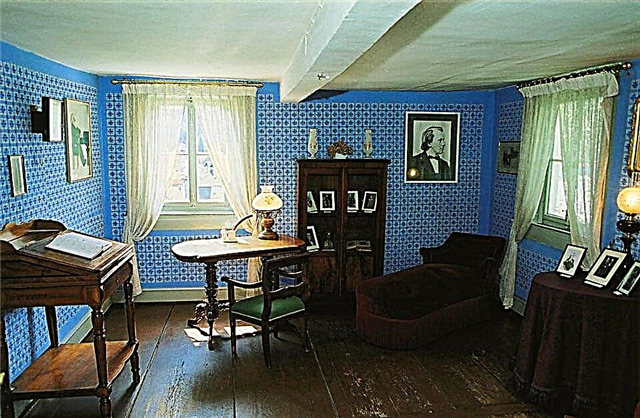
The light house attracts fans of the German composer like a magnet. The Badenites managed to save the building and rooms where Johannes Brahms lived. The house was threatened with demolition, but the inhabitants of Baden raised funds for the restoration, perpetuating the memory of "the last knight of romanticism in music." In the resort town, the composer found peace of mind and inspiration. For 9 years in a row, he came to Baden every summer, walked along the embankment of the Os River, communicated with the townspeople.
First and Second Symphony, German Requiem. The creation of great works is associated precisely with the house number 8 on the Lichtentaler alley. The people of Baden managed to preserve the composer's personal belongings, scores, and the special atmosphere of antiquity. Upon entering the building, there is a feeling: Brahms did not leave him, the sounds of the newly composed music will soon sound in the house.
Spitalkirche

The hospital church is called the most elegant temple in the city. The construction of the "Spitalkirche" dates back to the 18th century, and the time when the parish was founded is controversial among historians. The church was built in 2 years. In order to have time to plaster the walls, complete the murals, assemble the organ, the craftsmen worked around the clock. Previously, there was another hospital church at the Baden hospital. When services began in the new church, it was closed, and the first one was named "Spitalkirche".
An important part of the interior of the temple is the unique frescoes depicting biblical subjects, whose pristine beauty the parishioners managed to preserve during the most difficult times for Baden. During the Second World War, services in the hospital church did not stop. Today the temple fulfills the tasks of an educational, cultural Christian center. Every year, organ concerts at the Spitalkirch bring together devotees of sacred music.
Alt-Eberstein fortress ruins

On the site of the ruins there was a luxurious residence of a representative of the famous noble family of Eberstein. Some sources call the building a "fortress", others - a "castle", which does not diminish the attractiveness of the ancient ruins for fans of knightly novels. The Eberstein family dates back to the founding of the Holy Roman Empire. His male line was interrupted in the 17th century. Passions boiled around the famous fortress in the XI-XIII centuries: the Eberstein were accused of conspiracies, witchcraft, and tried to seize their lands.
Previously, they tried to take the fortress by storm, as evidenced by the miraculously preserved frescoes on the walls of the building. Fragments of the walls allow us to conclude: the structures were erected by skilled masons who knew the secrets of especially strong mortars. The 18-meter tower is not an architectural delight: from its height, an excellent view of the surroundings opens up, which allowed the defenders of the fortress to timely notice the approach of enemies. There is a dungeon on the territory of the complex, to which secret staircases and passages lead.
Lake Mummelsee
The most magical and beautiful place in the city is Lake Mummelsee. It is also called "white water lily". It is located under the city near the Black Forest mountain road, but, nevertheless, it is very popular. The lake is located at an altitude of more than a thousand meters, and is surrounded by a black forest and interesting local legends.
Rumor has it that real mermaids live in the lake and the lake Lord, who comes to the surface at night. Here is the most crystal water and clean air. Tourists can have a small rest or a picnic here, imagining how the famous brothers Grimm were looking for inspiration here many years ago.



